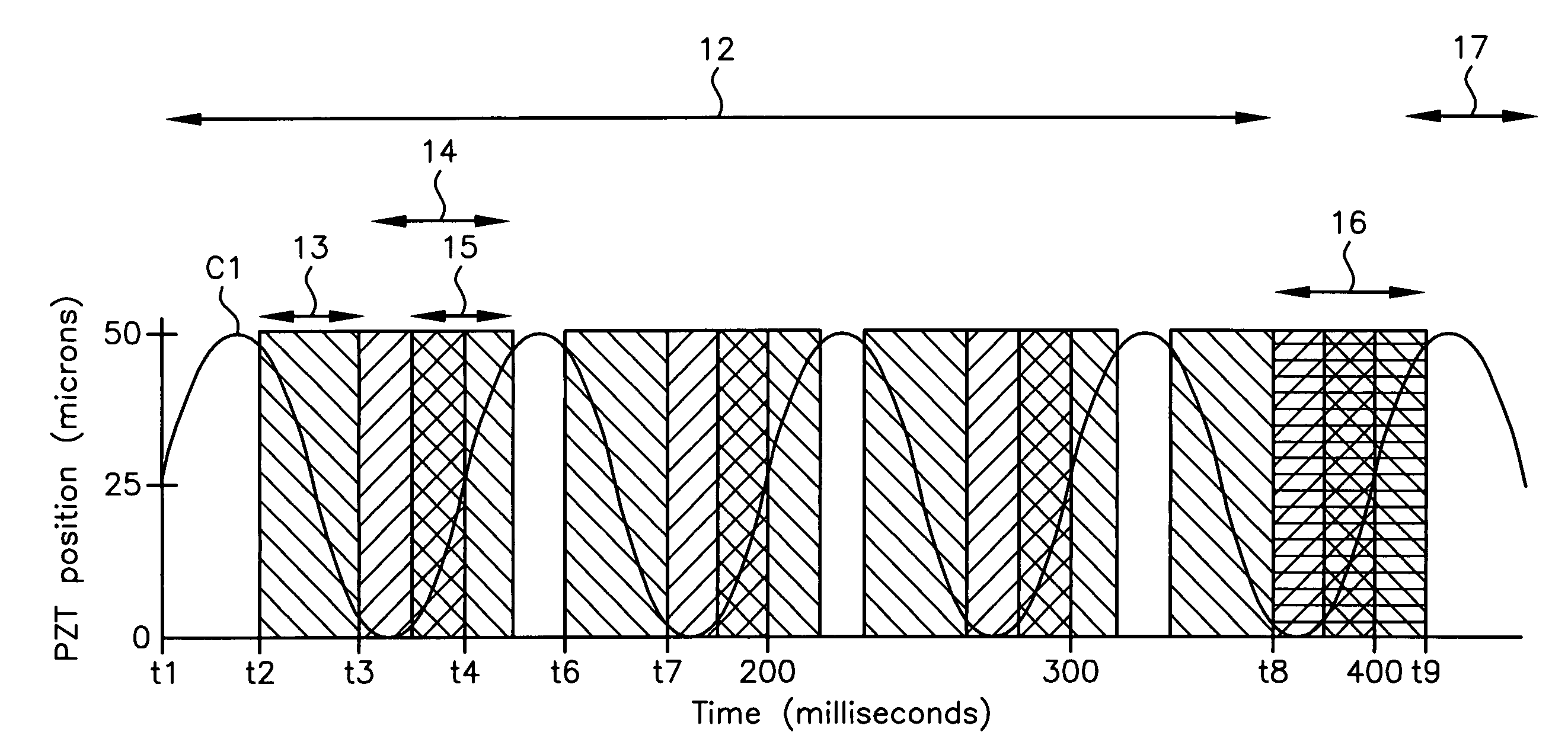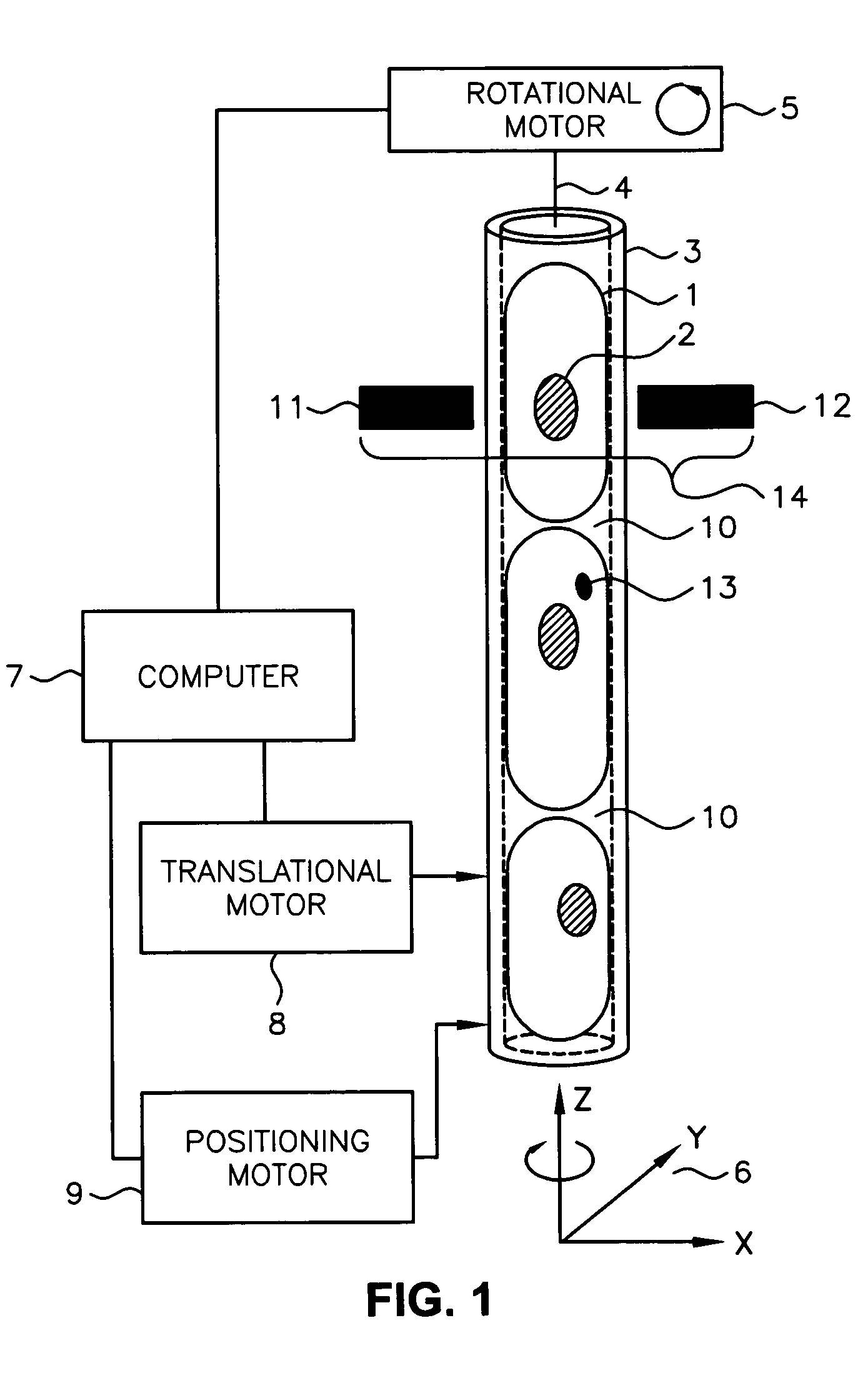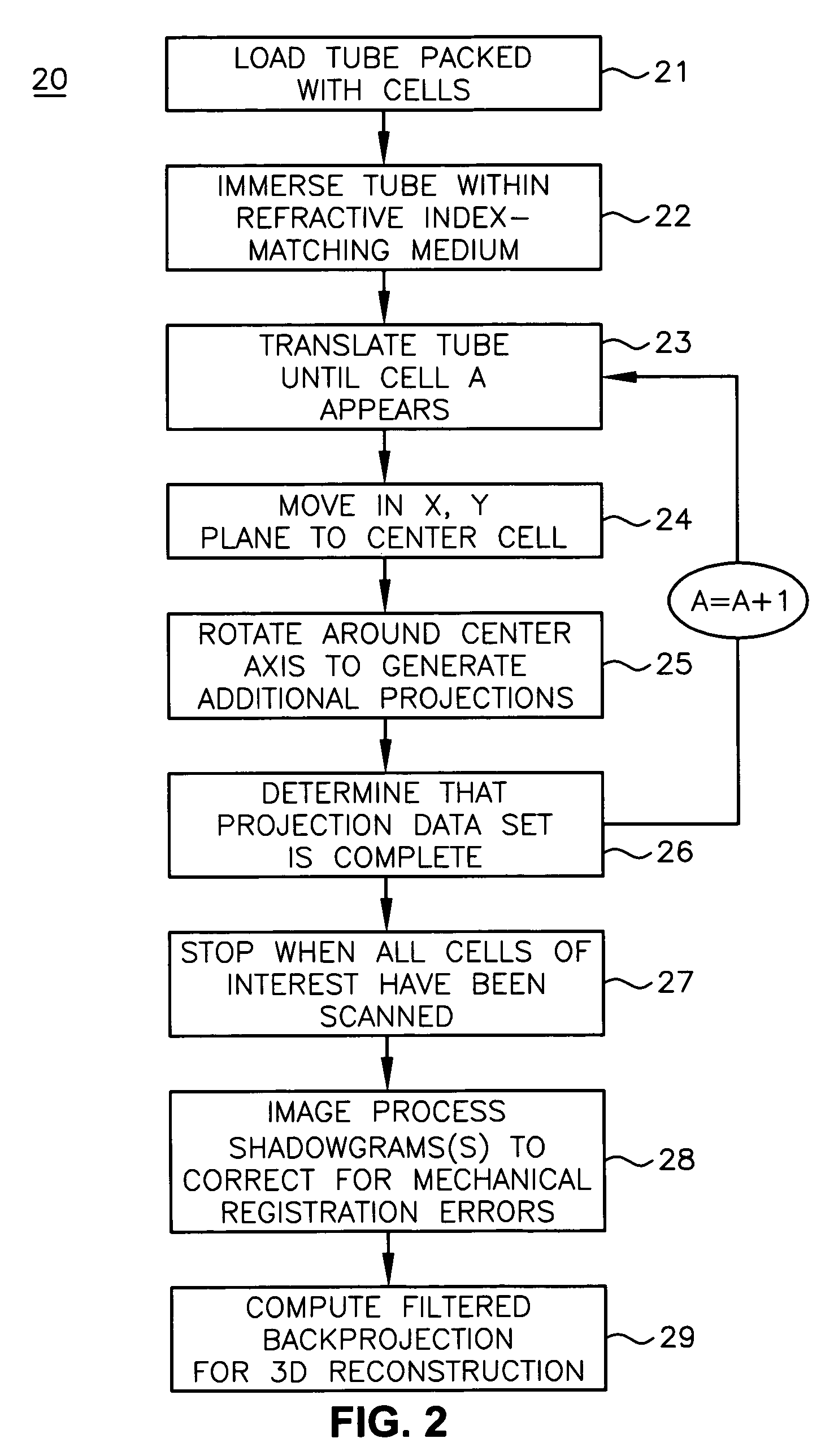Method and apparatus for pseudo-projection formation for optical tomography
a technology of optical tomography and pseudo-projection, applied in the field of optical systems, can solve the problems of large amount of computer memory, limited spatial resolution that can be achieved, and scattering can become a significant problem, and achieve the effect of reducing scattered ligh
- Summary
- Abstract
- Description
- Claims
- Application Information
AI Technical Summary
Problems solved by technology
Method used
Image
Examples
Embodiment Construction
General Embodiments
[0036]Referring now to FIG. 1, there shown schematically is an example illustration of cells packed into a capillary tube as contemplated by an embodiment of the present invention. In this example embodiment, a section of the capillary tube 3 is filled with cells 1 that are packed rigidly into the tube. Each of the cells may include a nucleus 2. The capillary tube 3 has a central axis 4 oriented with reference to a coordinate system 6 having coordinates in the x, y and z-directions. In some instances, at least one molecular probe 13 may be bound within the cell. A computer 7 is coupled to provide control signals to a rotational motor 5 and a translational motor 8. It will be recognized that equivalent arrangements of one or more motors, gears or fluidics or other means of generating motion may also be employed to achieve the necessary translational and rotational motion of the capillary tube or other substrate. In some cases, one or more of the motors may be repla...
PUM
| Property | Measurement | Unit |
|---|---|---|
| diameter | aaaaa | aaaaa |
| diameter | aaaaa | aaaaa |
| length | aaaaa | aaaaa |
Abstract
Description
Claims
Application Information
 Login to View More
Login to View More - R&D
- Intellectual Property
- Life Sciences
- Materials
- Tech Scout
- Unparalleled Data Quality
- Higher Quality Content
- 60% Fewer Hallucinations
Browse by: Latest US Patents, China's latest patents, Technical Efficacy Thesaurus, Application Domain, Technology Topic, Popular Technical Reports.
© 2025 PatSnap. All rights reserved.Legal|Privacy policy|Modern Slavery Act Transparency Statement|Sitemap|About US| Contact US: help@patsnap.com



